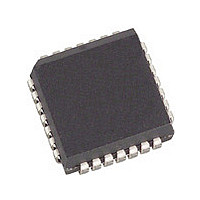COM20020I-DZD Standard Microsystems (SMSC), COM20020I-DZD Datasheet - Page 69

COM20020I-DZD
Manufacturer Part Number
COM20020I-DZD
Description
Manufacturer
Standard Microsystems (SMSC)
Datasheet
1.COM20020I-DZD.pdf
(72 pages)
Specifications of COM20020I-DZD
Number Of Transceivers
1
Operating Supply Voltage (max)
5.5V
Operating Supply Voltage (typ)
5V
Operating Supply Voltage (min)
4.5V
Operating Temperature (max)
85C
Operating Temperature (min)
-40C
Operating Temperature Classification
Industrial
Mounting
Surface Mount
Pin Count
28
Lead Free Status / RoHS Status
Compliant
Available stocks
Company
Part Number
Manufacturer
Quantity
Price
Company:
Part Number:
COM20020I-DZD
Manufacturer:
Standard
Quantity:
17 665
Company:
Part Number:
COM20020I-DZD
Manufacturer:
SMSC
Quantity:
269
Company:
Part Number:
COM20020I-DZD
Manufacturer:
Microchip Technology
Quantity:
10 000
Company:
Part Number:
COM20020I-DZD-TR
Manufacturer:
Microchip Technology
Quantity:
10 000
5Mbps ARCNET (ANSI 878.1) Controller with 2K x 8 On-Chip RAM
Datasheet
SMSC COM20020I Rev D
synchronized between the CPU and COM20020ID. Thus, changing the CKP3-1 timing does not
synchronize with the internal clocks of Pre-Scalar, and changing CKP3-1 may cause spike noise to appear
on the output clock line.
Setting the EF bit will include flip-flops inserted between the Configuration register and Pre-Scalar for
synchronizing the CKP3-1 with Pre-Scalar’s internal clocks.
Never change the CKP3-1 when the data rate is over 5 Mbps. They must all be zero.
The COM20020ID limits the write interval time for continuous writing to the Command register. The
minimum interval time is changed by the Data Rate. It's 100 nS at the 2.5 Mbps and 1.6 μS at the 156.25
Kbps. This 1.6 μS is very long for CPU.
Setting the EF bit will change the clock source from OSCK clock (8 times frequency of data rate) to XTAL
clock which is not changed by the data rate, such that the minimum interval time becomes 100 nS.
The COM20020ID has a write prohibition period for writing the Enable Transmit/Receive Commands. This
period is started by the TA or RI bit (Status Reg.) returning to High. This prohibition period is caused by
setting the TA/RI bit with a pulse signal. It is 3.2 μS at 156.25 Kbps. This period may be a problem when
using interrupt processing. The interrupt occurrs when the RI bit returns to High. The CPU writes the next
Enable Receive Command to the other page immediately. In this case, the interval time between the
interrupt and writing Command is shorter than 3.2 μS.
Setting the EF bit will cause the TA/RI bit to return to High upon release of the pulse signal for setting the
TA/RI bit, instead of at the start of the pulse. This is illustrated in Figure 0.1 on the following page.
The EF bit also controls the resolution of the following issues from the COM20020 Rev. B:
Tentative ID is used for generating the Network MAP, but it sometimes detects a non-existent node. Every
time the Tentative-ID register is written, the effect of the old Tentative-ID remains active for a while, which
results in an incorrect network map. It can be avoided by a carefully coded software routine, but this
requires the programmer to have deep knowledge of how the COM20020ID works. Duplicate-ID is mainly
used for generating the Network MAP. This has the same issue as Tentative-ID.
A minor logic change clears all the remaining effects of the old Tentative-ID and the old Duplicate-ID, when
the COM20020ID detects a write operation to Tentative-ID or Node-ID register. With this change,
programmers can use the Tentative-ID or Duplicate-ID for generating the network MAP without any issues.
This change is Enabled/Disabled by the EF bit.
The Mask register is reset by a soft reset in the COM20020 Rev. A, but is not reset in Rev. B. The Mask
register is related to the Status and Diagnostic register, so it should be reset by a soft reset. Otherwise,
every time the soft reset happens, the COM20020 Rev. B generates an unnecessary interrupt since the
status bits RI and TA are back to one by the soft reset.
This is resolved by changing the logic to reset the Mask register both by the hard reset and by the soft
reset. The soft reset is activated by the Node-ID register going to 00h or by the RESET bit going to High in
the Configuration register. This solution is Enabled/Disabled by the EF bit.
c)
d)
a)
b)
Shorten The Write Interval Time To The Command Register
Eliminate The Write Prohibition Period For The Enable Tx/Rx Commands
Network MAP Generation
Mask Register Reset
DATASHEET
Page 69
Revision 12-05-06















